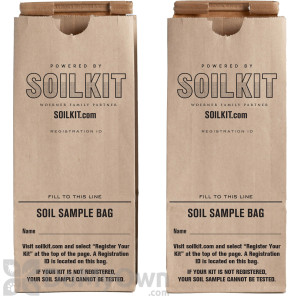Whether you want a lush green lawn or a garden full of healthy vegetables, applying fertilizers can help you achieve healthier, stronger plants. But with all the available options, how do you know which fertilizer is best for your lawn or garden?
Before applying a fertilizer, you should perform a soil test. Testing will let you know what type of nutrients and which fertilizer you will need. Soil tests provide an analysis of a variety of soil nutrient levels, including N-P-K (Nitrogen, Phosphorus, and Potassium). Most soil tests also tell you the pH level of your soil, and if you need an amendment such as lime or sulfur to correct the pH level.
The best time to get soil samples is usually in the fall, when conditions are relatively dry. This will also allow you time to get the right product before spring green up. You can take sample anytime the ground is not frozen and is reasonably dry. Skipping this step could lead to purchasing a product that isn’t very effective for your needs. It could also allow disease to move in and damage your lawn.
There are several options available for testing your soil. You can take your sample to your local county extension office or purchase a professional in-home soil testing kit. If you take your sample to your county extension office, make sure to label the sample with your name, where the sample was taken from, and fill out an information sheet as provided by your extension office. A small fee is usually associated with testing and may take two to three weeks to get results.
Soils will vary from within the state, your community, and even your yard. Trees and shrubs, lawn, vegetable and flower gardens should all be tested separately.
Use a soil probe to take separate samples for each area you wish to test. Work the probe into the ground, going four inches deep in established lawns. For garden beds, go six to eight inches deep. Collect five or more cores from the area you are testing, then mix them together to make a representative sample. This should be around two cups of soil. Put the two cups of soil in a clean plastic bag. You can also get soil sample bags from your county extension office.
Make sure to avoid problem areas such as ditches, fence rows, hills, eroded areas, and pet waste areas.
Soil tests may need to be done every three to five years to check the nutrients needed.




